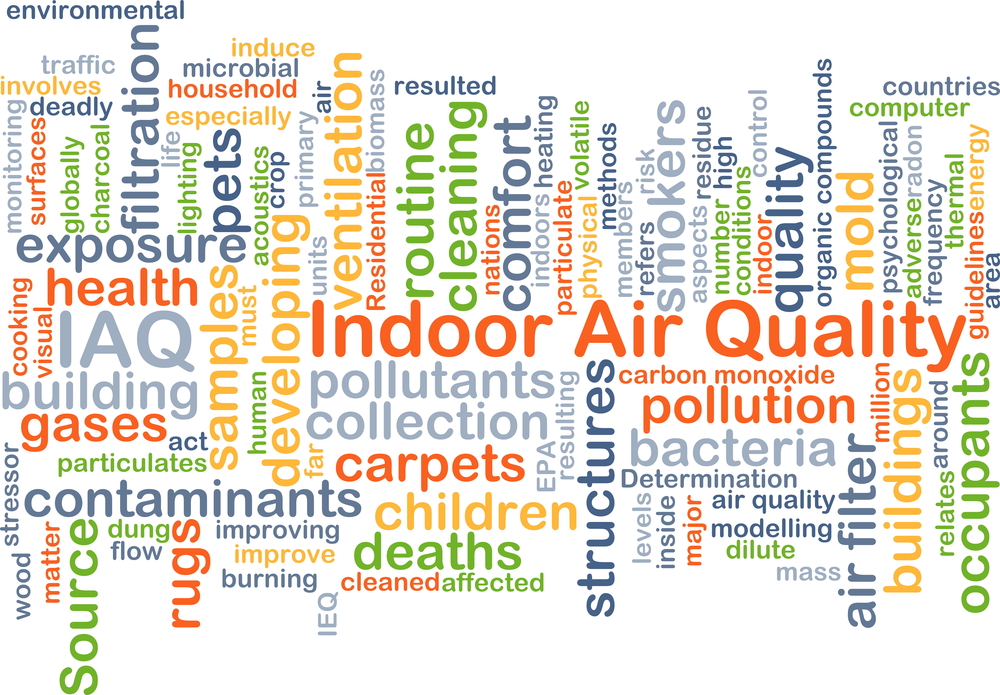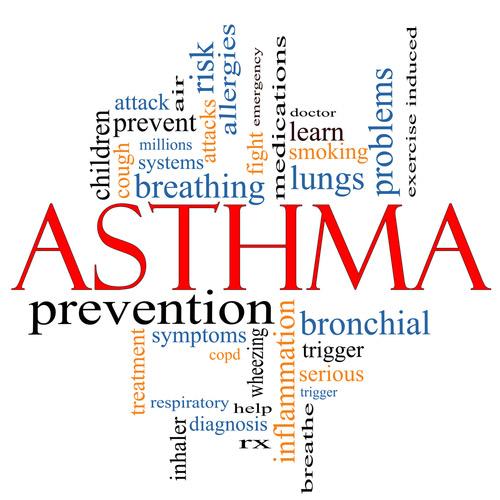We are all aware of the issues that are caused by outdoor air pollution, but most people do not know about how indoor air pollution can also be a serious issue for people with asthma.
Asthma patients react to substances in the air that cause irritation in the lung airways. These particulates are typically liquid or solid particles that are inhaled easily. Often people who have allergic asthma develop a reaction to certain substances in indoor air pollution. Some of the indoor air pollutants:
- Mold and mildew
- Dust mites
- Pest droppings
- Pet dander
- Nitrogen dioxide from stoves and natural gas heaters
- Perfumes, scented candles, hair spray, room fresheners
- Spray disinfectants and cleaners
- Incense
- Smoke from wood stoves, fireplaces, or heaters
Not only does poor air quality indoors worsen the symptoms of someone who already has asthma, but it can also lead to the development of asthma in vulnerable people such as small children. Indoor triggers can be divided into two categories: allergens or irritants.
Irritants include substances that aggravate the airways and lead to inflammation. Some examples of irritants include dust, tobacco smoke, nitrogen dioxide, and odors from adhesives, pesticides, tiles and other products. Indoor air pollutants are biological materials including bacteria, cockroach, pet dander, and other insect substances, pollen, and mold. They differ in size and are typically measured in microns. The bigger the size of the particles, the quicker they settle out of the air. Dust mites, cockroach debris, and pollen settle faster than animal allergens or molds.
Controlling Indoor Air Pollution
Asthma and allergy control start at home. Clearing the indoor environment will help everyone staying there to breathe free and easy. Many asthma patients stay indoor when the air outside is filled with spores and pollen. However, these substances can cause problems indoors as well. Clearing the air quality inside your home, car and office can help decrease the symptoms of the condition. There are different ways you can control asthma and air pollution at home.
- Installing high-efficiency air filters (HEPA)
- Reduce usage of aerosols or spray cleaners
- Staying away scented candles or air fresheners
- Putting electric logs in fireplaces
- Not allowing mold or mildew growth
- Using pest control measures
To keep the indoor air clean, get rid of all the allergen sources that you are sensitive to. It can include carpets, pets, stuffed toys, furniture, and bedding. The next step is to take steps to reduce your exposure to the allergens. You can also improve the circulation of outside air into the home. For many people, it helps to decrease the humidity levels in the air. When the humidity levels are down, it helps reduce mold growth and dust mites. Using air conditioners can help decrease humidity and also helps outdoor allergens from entering inside.
Also Read: Differences between COPD and Asthma
Here are some more things you can do to decrease indoor allergens.
Reduce dust mites – Clean and de-clutter your home. It is best to have bare walls and floors. Keep in mind to wash your bedding, pillows and other furnishings in hot water at least once a week.
Avoid animal dander – It is advised that people who are allergic to animal dancer should not keep any pets with fur or feather. If you want to keep a pet, make sure it stays away from the bedroom.
Avoid pollen- Keep the doors and windows of your house closed to prevent pollen from entering your house.
Prevent mold spores- Take steps to decrease moisture around the kitchen, bathroom and the other areas in the house. You can use dehumidifiers to decrease dust mites and mold.
Exhaust fans- When you are cooking, you can use the kitchen exhaust, and when you are showering, you can use the bathroom exhaust. It will help reduce humidity levels and help manage mold growth.
Keep doors and windows closed- Outdoor air is one of the major contaminants of indoor air. You can take steps to ensure that outside air does not get inside your house. You can keep your door, and windows closed when the pollen count is high in the air to prevent it from getting inside.
Also Read: Asthma and Allergies – What’s the Connection
Following these simple steps will help you to control indoor air pollution and stay away from the signs of asthma.





